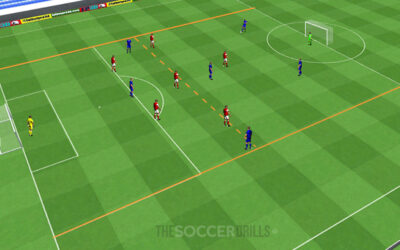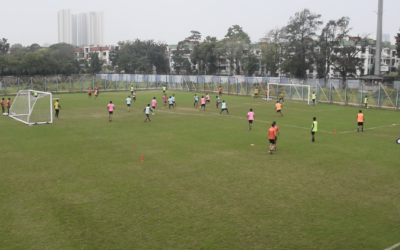If our aim is to practice in a real way the third man we have to forget about combinative plays and technical figures. We should use opposition and we should create the right scenario so the players can develop the capacity of identifying themselves as a second and third man.
The players seeing themselves as possible receptors of the ball after two passes is the most difficult aspect to develop. It is going to be difficult for them to read it and be prepared properly for it.
In the normal game, when the first player (ball possessor) connects with the second player, is usual that this second player turns in order to progress with the ball. In fact, this is something which is constantly worked in many formation academies (mostly when the players are in a risky area for losing the ball), but, if this second player turns, he will never connect with the third man and this possible third man will most likely run forward thinking that this second player is going to turn. Let’s see an example of this usual behavior:
Which rule can we specify in this sequence to change the behaviors? To do so, we will use an atypical and different rule which is going to be tremendously effective. We will ban to turn with the ball.
Restricting this turn, we provoke the third man to do a support movement to receive the ball facing the play. By doing this, the players will be interpreting the game and will be using the tactical concept of the third man. Let’s see the same sequence with the application of this provocation rule.(animación sin giro)
Advantages of this provocation rule (Apart from the development of the third man concept).
- To avoid the players to turn in dangerous areas and lose the ball. If we divide the training space in three areas we will just allow to turn in the finishing area.
- Due to the impossibility for the players to turn, they will start looking for an interesting solution. They will put themselves in a situation that allows them to progress without the need for turning. We will then overcome this difficult aspect to put in practice.
Here we can see a comparison of an action from the same exercise with or without this rule:
Footnote: This provocation rule requires brave coaches that want to put it in practice for the first time. Once the players see that the game is more fluid, they will be very pleased with it.



0 Comments